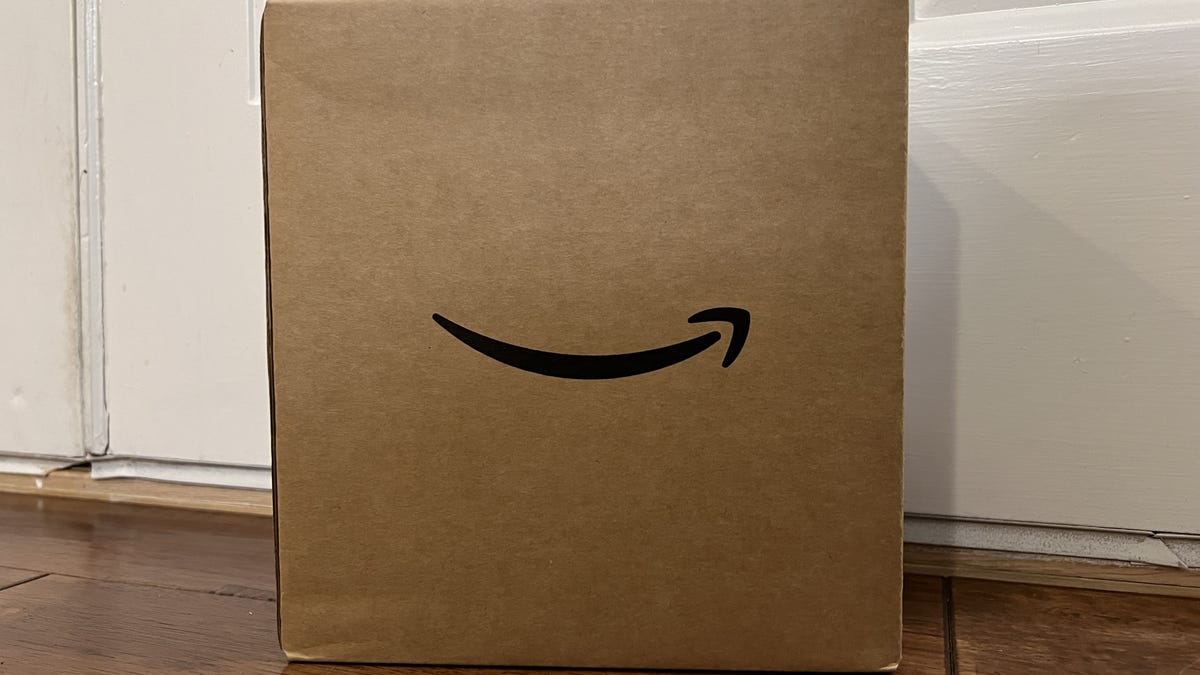Technologies
Amazon’s Big Year of Thinking Small
Amazon built like our pandemic-fueled shopping spree would never end. Now it has, and the company’s shrinking.

We all came out of the last three years changed. Amazon is no different.
All that online shopping you did during the pandemic added to soaring demand, which combined with other economic forces to push prices higher. Costs got too high for the tech industry, too, driving companies to shrink their ambitions – even the gargantuan Amazon.
Amazon was already the Goliath of US e-commerce before the pandemic, representing more than 40% of the market, according to Statista. With the boom in online shopping, fueled first by lockdowns and then by stimulus cash, the company’s profits shot up for more than a year.
Then came the bust. Amazon’s growth stalled out in the middle of 2021, and it posted its first loss in seven years at the beginning of 2022. By November, Amazon was the first company in the world to lose $1 trillion dollars in value, Bloomberg reported.
The problem wasn’t just that we stopped shopping through our misery. Amazon, like a lot of tech companies, banked big time on our new buying behaviors. As we went back to brick-and-mortar stores and cut our spending this year, the company was left with an oversized workforce and a hulking logistics network it couldn’t support. This year, Amazon and its competitors scrapped large chunks of what they built during the pandemic.
For you, Amazon’s new frugality means its advancements on flashy new gadgets — or the inexpensive ones you use to set timers, create reminders and check the weather — may get less of the company’s devotion next year.
Amazon’s most visible sign of retreat was the planned layoffs, which the company has confirmed will happen without giving the number of employees it plans to cut. Estimates in new reports range from 10,000 to 20,000 people who will lose their Amazon jobs in the coming months, but that’s just the most recent glimpse of trouble. Amazon began telling investors in October 2021 that it had built up its warehousing and air freight capacity too much in response to early pandemic demand.
The middle of this year started to reveal casualties elsewhere in the company. Amazon shut down its physical bookstores and some Amazon Go convenience store locations. It jettisoned its Amazon Care health care service on doubts it would ever be profitable. And departments in charge of customer favorites like Alexa-powered devices took a disproportionate hit from the layoffs so far.
Amazon declined to provide a comment for this story but directed CNET to remarks Amazon CEO Andy Jassy made during the New York Times DealBook Conference. Jassy said then that Amazon wasn’t done making bets on businesses that could have long-term payoffs.
«What we’re trying to do is streamline our costs in a bunch of different areas, while at the same time making sure that we keep betting on the things that we believe long-term could change,» Jassy said.
Still, this year’s cuts at Amazon reflect a turn toward immediate profitability, said Neil Saunders, a retail analyst at GlobalData, noting that the company hasn’t found a way to profit from Alexa devices.
It’s a sign of an industry-wide reckoning with shoppers hitting the brakes on spending, Saunders said, adding, «A lot of companies behaved as if it was a permanent shift.»
Peaks and valleys
E-commerce hit startling heights in 2020. Shoppers dropped earnings and stimulus cash on home furnishings, gardening supplies and electronics, and growth of online shopping was remarkable. It shot up from a steady growth rate of around 16% at the end of 2019 to more than 44% in the summer months of 2020.
E-commerce is still growing today, but the frenzy is over.
But while spending was still at unprecedented levels, Amazon used the extra cash to feverishly build warehouses and air hubs. It doubled its ranks from just under 800,000 employees at the end of 2019 to more than 1.6 million by the end of 2021. And it wasn’t just Amazon. Shopify, the company behind many standalone online shops, also went on a hiring spree. Social media companies like Meta and Twitter benefited too, bringing in extra advertising revenue from merchants who aimed targeted ads at shoppers sitting at home.
Figures from the US Census Bureau show e-commerce spending is now where it would be if it had just kept growing at the same steady clip that it was before the pandemic. Even though the feverish buying started to cool last year, a few tech chiefs have said they thought the shift to online shopping was permanent. It wasn’t.
«Those chickens are coming home to roost,» Saunders said.
When Meta announced layoffs of 11,000 employees in November, CEO Mark Zuckerberg conceded it was a mistake to assume increased revenues would endure. Shopify cut 10% of its workforce in July, with CEO Tobi Lutke saying he was wrong to predict a permanent leap ahead of five to ten years in the growth rate of online shopping.
Amazon’s layoffs will also be significant. Proportionally, they’re on track to represent the company’s biggest workforce reduction since the 2001 dot-com bust, which hit 15% of its staff, according to the New York Times. Nonetheless, Jassy said Amazon made the right decision to scale up rapidly starting in 2020, adding that it was better to get too big than to stay too constrained to meet demand from shoppers and from sellers who use the company’s marketplace.
The slowdown shouldn’t have caught the heavyweights of e-commerce by surprise, said Andrew Lipsman, a retail analyst at Insider Intelligence. We were going to regain access to in-person stores at some point, and stimulus payments weren’t going to last forever. But even if cash-flush tech companies knew there would be an inevitable bust, they couldn’t let the opportunity to scale up and capture all our shopping dollars pass them by.
«They tend to think of it as an arms race,» Lipsman said. «When their major competitor is investing heavily, they don’t want to be the ones not doing it.»
Slowing innovation
That bitter downswing has forced Amazon to pull back on some of its flashy pet projects, like Alexa, where a large portion of the layoffs took place. While Alexa-powered devices like Echo smart speakers and displays dominate the smart home market, they’re priced to lose money. And even though Alexa made huge advances in voice recognition and AI-generated speech, the technology hasn’t succeeded in getting people to shop by voice, analysts say.
Amazon’s health care initiatives are also seeing cutbacks. The company said Amazon Care, a service that offered telehealth and in-home medical appointments, would close down at the end of 2022. (Amazon says it’s pushing forward with its purchase of One Medical, which offers primary care clinics and telehealth services).
Also on the chopping block were Amazon’s brick-and-mortar bookstores and its remaining «Four-star Stores,» which analysts say never found a purpose.
Amazon hasn’t killed the Alexa division or its health care efforts entirely, and Jassy has said the company is still betting on innovations like autonomous vehicles with its Zoox business. But the moves show Amazon is unwilling to sink quite as much money into services just for the sake of destabilizing or owning a market. That’s a contrast to its earliest approaches with selling books and music online, which Amazon pursued while taking a loss for seven years before finally turning a profit in 2001, said Sucharita Kodali, a retail analyst with Forrester.
«The DNA of Amazon was, ‘we’re going to lose money,'» Kodali said. Now the company must invest in things that’ll pay off sooner rather than later, she added.
And just like everything about Amazon, when the company cuts back, it does it in a big way.
Technologies
Judge Blocks Texas App Store Age-Check Law
A preliminary injunction found the Texas law, set to begin Jan. 1, is «more likely than not unconstitutional.»

A new Texas state law set to take effect on Jan. 1 would have required app stores to implement age verification processes. But the law has been put on hold, at least temporarily, by a federal court judge.
As reported by the Texas Tribune, Senate Bill 2420, also known as the Texas App Store Accountability Act, is the subject of a temporary injunction issued by US District Judge Robert Pitman.
Pitman said in his decision that the law as written is broad, vague and «more likely than not unconstitutional.» However, he also wrote the court «recognizes the importance of ongoing efforts to better safeguard children when they are on their devices.»
Don’t miss any of our unbiased tech content and lab-based reviews. Add CNET as a preferred Google source.
The Texas law, signed into law by Governor Greg Abbott in May, requires app store operators — including Apple, Google, Nintendo, Steam and more — to build age verification processes for the storefronts and to only allow downloads to minors who obtain parental consent. The injunction is a ruling in an October lawsuit filed by the Computer & Communication Industry Association.
CCIA senior vice president Stephanie Joyce said in a statement, «This Order stops the Texas App Store Accountability Act from taking effect in order to preserve the First Amendment rights of app stores, app developers, parents, and younger internet users. It also protects parents’ inviolate right to use their own judgment in safeguarding their children online using the myriad tools our members provide.»
Other individuals and the advocacy group Students Engaged in Advancing Texas also filed suits over the law, the Texas Tribune reported.
App Store Accountability Act
The bill author, State Senator Angela Paxton, said the bill was meant to give parents «common sense tools to protect their kids and to survive court challenges by those who may have lesser priorities.»
The language of Texas Senate Bill 2420 does not only include mobile app stores from Apple or Google, but any «website, software application, or other electronic service that distributes software applications from the owner or developer of a software application to the user of a mobile device.»
By that definition, websites with links to browser games or mobile game consoles with download options would fall under the Texas law as written. The law also defines mobile devices as including phones and tablets, as well as any other handheld device capable of transmitting or storing information wirelessly.
The parental consent aspect of the law requires those under 18 to have an app store account affiliated with a parent or guardian to purchase or download applications.
Age verification elsewhere
In an effort to keep adult materials out of reach of minors and to protect children from potentially harmful content and interactions, tech companies have been compelled by law or through legal action to verify the age of users.
Roblox, which has a huge audience of minors, began rolling out stricter age verification after investigations and lawsuits hurt its reputation as a safe gaming space. Australia is perhaps the most large-scale example of a government restricting access to online content. In December, Australia began restricting social media access to those 16 and older. Reddit recently challenged that law.
In the US, age verification laws have primarily targeted adult sites. Texas already has a law on the books that requires adult sites to age-block their content. The Supreme Court upheld that law in a June ruling. The UK has also enacted age restriction rules for adult sites as have other US states.
Technologies
Today’s NYT Mini Crossword Answers for Thursday, Dec. 25
Here are the answers for The New York Times Mini Crossword for Dec. 25.

Looking for the most recent Mini Crossword answer? Click here for today’s Mini Crossword hints, as well as our daily answers and hints for The New York Times Wordle, Strands, Connections and Connections: Sports Edition puzzles.
Need some help with today’s Mini Crossword? Of course, there’s a very Christmassy clue involved. And once you solve the entire puzzle, look at the letters used in all the answers and see what they have in common. (5-Across will tell you!) Read on for all the answers. And if you could use some hints and guidance for daily solving, check out our Mini Crossword tips.
If you’re looking for today’s Wordle, Connections, Connections: Sports Edition and Strands answers, you can visit CNET’s NYT puzzle hints page.
Read more: Tips and Tricks for Solving The New York Times Mini Crossword
Let’s get to those Mini Crossword clues and answers.
Mini across clues and answers
1A clue: ___ King Cole, singer with the album «The Magic of Christmas»
Answer: NAT
4A clue: Body drawings, informally
Answer: TATS
5A clue: Letters to ___ (what this Mini was made with)
Answer: SANTA
6A clue: Huge fan, in slang
Answer: STAN
7A clue: «Illmatic» rapper
Answer: NAS
Mini down clues and answers
1D clue: Grandmothers, by another name
Answer: NANAS
2D clue: Abbr. before a name on a memo
Answer: ATTN
3D clue: Org. with long lines around the holidays
Answer: TSA
4D clue: «See ya later!»
Answer: TATA
5D clue: Govt.-issued ID
Answer: SSN
Don’t miss any of our unbiased tech content and lab-based reviews. Add CNET as a preferred Google source.
Technologies
Don’t Let a Border Agent Ruin Your Holiday Trip. Travel With a Burner Phone
Yes, you should leave your main phone at home and take a cheap burner this winter.

Prepare for a whole new level of border-crossing anxiety this holiday season: the high-probability of a phone search. New figures from US Customs and Border Protection say agents aren’t just glancing at your lock screen anymore — they are aggressively ramping up device inspections, even for citizens coming home. We aren’t just talking about a quick scroll through your photos, either. Agents are increasingly using forensic tools to clone and analyze everything on your device.
The stats are genuinely alarming. In just a three-month window this year, nearly 15,000 devices were flagged for searches, with over a thousand subjected to deep-dive data copying. If you’re traveling with your primary phone, you are essentially carrying your entire digital existence into a legal gray zone where privacy is optional.
The smartest defensive play is remarkably low-tech: the burner phone. By traveling with a secondary, stripped-down device, you ensure your private data stays safe at home while you stay connected abroad. But privacy isn’t the only perk. Moving to a «dumb» phone is the ultimate digital detox, helping you escape the notification trap that usually ruins a vacation.
Even figures like Conan O’Brien have ditched the smartphone to cut through the noise. Whether you’re dodging invasive border searches or just trying to enjoy your trip without being glued to a screen, a burner might be the best travel investment you make this year.
Read more: Best Prepaid Phone of 2025
Although carriers have offered prepaid phones since the ’90s, «burner phones» or «burners» became popular in the 2000s following the celebrated HBO series The Wire, where they helped characters avoid getting caught by the police. Although often portrayed in that light, burners aren’t only used by criminals; they’re also used anyone concerned with surveillance or privacy infringement.
What is a burner phone, and how does it work? Here’s everything you need to know about burners and how to get one.
Don’t miss any of our unbiased tech content and lab-based reviews. Add CNET as a preferred Google source.
What is a burner phone?
A burner phone is a cheap prepaid phone with no commitments. It comes with a set number of prepaid call minutes, text messages or data, and it’s designed to be disposed of after use.
Burner phones are typically used when you need a phone quickly, without intentions of long-term use. They’re contract-free, and you can grab them off the counter. They’re called burner phones because you can «burn» them (trash them) after use, and the phone can’t be traced back to you, which makes them appealing to criminals. Of course, those committed to illicit activities often do more than just throw these phones in the trash, and often completely obliterate the SIM cards and other materials by smashing them with a hammer or melting them away.
Burners are different from getting a regular, contract-bound cellphone plan that requires your information to be on file.
Why should you use a burner phone?
Burner phones are an easy way to avoid cellphone contracts or spam that you get on your primary phone number. Burners aren’t linked to your identity, so you can avoid being tracked down or contacted.
You don’t have to dispose of a burner phone after use. You can add more minutes and continue using it. Burner phones can still function as regular phones, minus the hassle of a contract.
You can also get a burner phone as a secondary phone for a specific purpose, like having a spare phone number for two-factor authentication texts, for business or to avoid roaming charges while traveling. Burner phones are often used by anyone concerned with privacy.
Read more: The Data Privacy Tips Digital Security Experts Wish You Knew
Burner phones, prepaid phones, smartphones and burner SIMs: What’s the difference?
Burner phones are cheap phones with simple designs that lack the bells and whistles of a smartphone. Because they’re designed to be disposable, you only get the essentials, as seen by the most common version, the flip phone.
All burner phones are prepaid phones, but not all prepaid phones are burners. What sets a burner apart is that you won’t have to give away any personal information to get one, and it won’t be traceable back to you. Again, a burner phone is cheap enough to be destroyed after use.
Prepaid smartphones are generally low-end models. You can use any unlocked smartphone with prepaid SIM cards, essentially making it a prepaid phone.
If you want a burner, you don’t necessarily have to buy a new phone. You can get a burner SIM and use it with an existing phone. Burner SIMs are prepaid SIMs you can get without a contract or giving away personal information.
Where can you buy a burner phone?
Burner phones are available at all major retail outlets, including Best Buy, Target and Walmart. They’re also often available at convenience stores like 7-Eleven, local supermarkets, gas stations and retail phone outlets like Cricket and Metro.
You can get a burner phone with cash, and it should cost between $10 and $50, although it may cost more if you get more minutes and data. If you’re getting a burner phone specifically to avoid having the phone traced back to you, it makes sense to pay with cash instead of a credit card.
If you just want a prepaid secondary phone, you can use a credit card. Just keep in mind that credit cards leave a trail that leads back to you.
There are also many apps that let you get secondary phone numbers, including Google Fi and the Burner app. However, these aren’t burners necessarily because the providers typically have at least some of your personal information. Additionally, apps like Google Talk require a phone number that’s already in use for you to choose a number with the service.
If you’re just looking to get a solid prepaid phone without anonymity, check out our full guide for the best prepaid phone plans available. We also have a guide for the best cheap phone plans.
-

 Technologies3 года ago
Technologies3 года agoTech Companies Need to Be Held Accountable for Security, Experts Say
-

 Technologies3 года ago
Technologies3 года agoBest Handheld Game Console in 2023
-

 Technologies3 года ago
Technologies3 года agoTighten Up Your VR Game With the Best Head Straps for Quest 2
-

 Technologies4 года ago
Technologies4 года agoBlack Friday 2021: The best deals on TVs, headphones, kitchenware, and more
-

 Technologies4 года ago
Technologies4 года agoVerum, Wickr and Threema: next generation secured messengers
-

 Technologies4 года ago
Technologies4 года agoGoogle to require vaccinations as Silicon Valley rethinks return-to-office policies
-

 Technologies4 года ago
Technologies4 года agoOlivia Harlan Dekker for Verum Messenger
-

 Technologies4 года ago
Technologies4 года agoiPhone 13 event: How to watch Apple’s big announcement tomorrow
